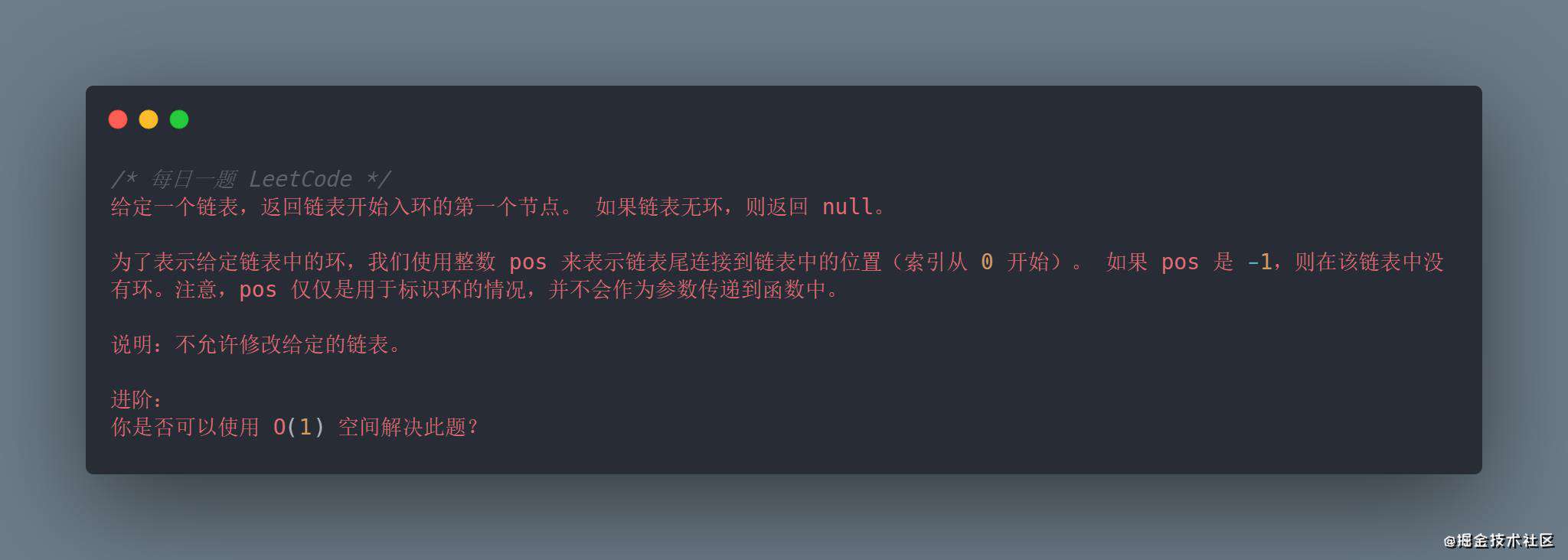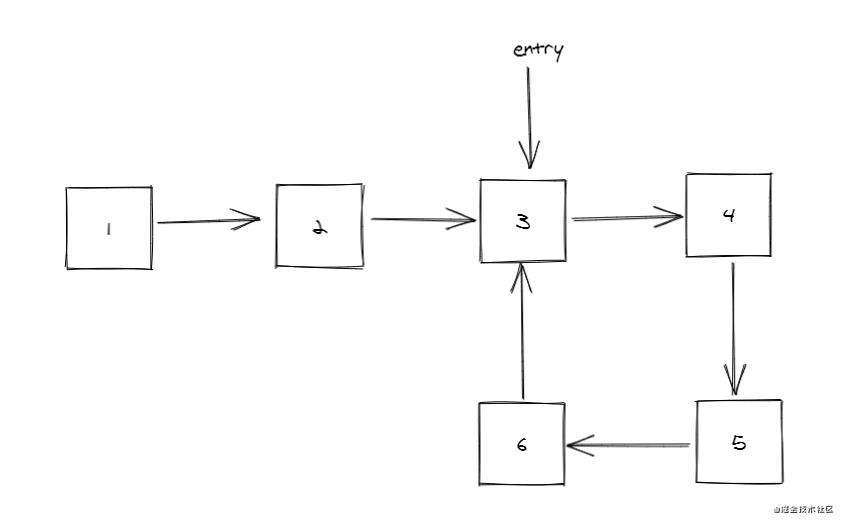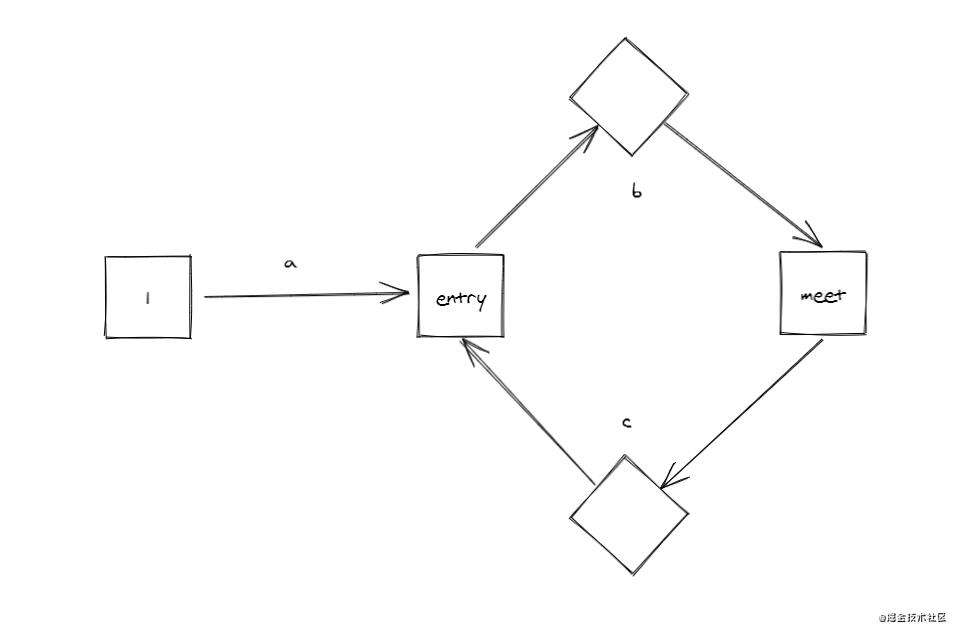题目

!! 题目来源:环形链表Ⅱ - 力扣
分析
前面已经做过基础的环形链表了,感兴趣的读者可以去看看这一篇:环形链表。
这里对环形链表不再赘述,接下来分析题目:在判断链表是否是环形之余,还需要找到入口节点。
何为入口节点?
看看下图就明白了:

这里的 3 就是环的入口节点。
明白了这点,那么题目其实已经比较好解了:当我们找到重合的第一个节点的时候,显然就是入口节点了。
var detectCycle = function (head) {
const cache = new Set();
while (head) {
if (cache.has(head)) {
return head;
} else {
cache.add(head);
}
head = head.next;
}
return null;
};
结果如下:

真正的难点在下面:可否使用 O1 的空间复杂度解决此题。
这个限制条件禁止了我们使用缓存,那么要怎样才能找到入口节点呢?
首先,限制了缓存,我们可以使用快慢节点的方式来判断环形链表 接下来的关键就是找到 fast 和 slow 的关系了
先来看一下图:

设 fast 和 slow 在 meet 节点相遇 设从 head 到 entry 的距离为 a 设从 entry 到 meet 的距离为 b 设从 meet 到 entry 的距离为 c
这里我们已知当 fast 和 slow 相遇时,fast 跑了两圈,也就是:
稍微计算一下就可以得到 的结论。
到这里就找到了 slow 和 fast 的关系,有什么用呢?
我们可以再设置一个 start 指针,当 fast 和 slow 在 meet 相遇时,让 start 以和 slow 相同的速度前行,因为 ,所以当 start 和 slow 相遇时,必然是在 entry 节点,届时返回该节点即可:
var detectCycle = function (head) {
let slow = head;
let fast = head;
let start = head;
while (fast && fast.next) {
slow = slow.next;
fast = fast.next.next;
if (slow === fast) {
while (slow && start) {
if (slow === start) {
return start;
}
slow = slow.next;
start = start.next;
}
}
}
return null;
};
当然,嫌嵌套不好看的话可以稍微优化一下:
const findEntry = (start, slow) => {
while (slow && start) {
if (slow === start) return start;
slow = slow.next;
start = start.next;
}
};
var detectCycle = function (head) {
let slow = head;
let fast = head;
let start = head;
while (fast && fast.next) {
slow = slow.next;
fast = fast.next.next;
if (slow === fast) return findEntry(start, slow);
}
return null;
};
结果如下:

常见问题FAQ
- 免费下载或者VIP会员专享资源能否直接商用?
- 本站所有资源版权均属于原作者所有,这里所提供资源均只能用于参考学习用,请勿直接商用。若由于商用引起版权纠纷,一切责任均由使用者承担。更多说明请参考 VIP介绍。
- 提示下载完但解压或打开不了?
- 找不到素材资源介绍文章里的示例图片?
- 模板不会安装或需要功能定制以及二次开发?






发表评论
还没有评论,快来抢沙发吧!